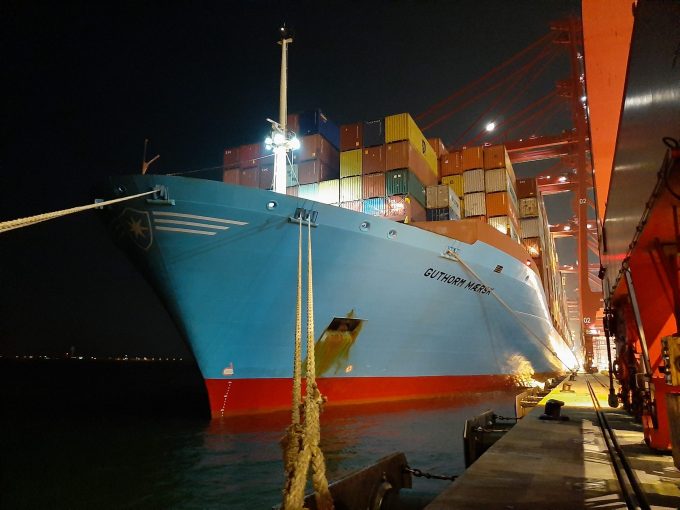Colombo capacity crunch adding to container line woes
Container lines are facing severe capacity problems at Sri Lanka’s Colombo port, as they reshuffle ...

Supply chains are in chaos, as it appears even the power of the US Navy is proving insufficient to deter attacks on commercial shipping in the Red Sea, with costs set to soar ever higher.
Having just days earlier said it would resume services through the waterway, Maersk announced it would re-suspend services after Yemen-based, Iranian-backed Houthi militants attacked its 15,000 teu box ship Hangzhou on Saturday.
In an update to customers, the Danish carrier said: “We have made the decision to pause all transits through the Red Sea and the Gulf of Aden until further notice.”
The attack on the Hangzhou began around 5pm on 30 December when it was struck by a missile and, while the US Navy intercepted two further missiles aimed at the vessel, a more audacious attack commenced in the early hours of Sunday, when four small boats seeking to land militants aboard to take control of the ship.
However this was thwarted by the ship’s security team and US naval helicopters.
According to reports, three of the four small vessels used in the attack were sunk, with all militants killed, but this was not sufficient to prevent Maersk reinstating the suspension of services it had relaxed on 24 December.
A coalition of US and, it is claimed, units from 20 other countries aimed to protect commercial shipping using the Red Sea through Operation Prosperity Guardian, launched on 19 December.
And while the US has shown relative speed in addressing threats, the superpower has seemingly failed to get its coalition partners onboard, with almost half of the parties involved refusing to publicly declare their participation.
For forwarders and shippers, this has led to a surge in costs amid a raft of new surcharges by carriers and a concomitant delay in deliveries.
Of the major carriers, CMA CGM is the only one willing to allow its ships to transit the Red Sea, and a source claimed this only involved an “occasional vessel”, and “only when there is a French warship on hand to offer security”, meaning more costs.
“Rates are increasing, with a large number of acronyms and mechanisms being employed, from established GRIs and PSSs to new ones,” a forwarder told The Loadstar.
“These include contingency surcharges, contingency adjustment charges and emergency contingency surcharges. Unless you accept, you don’t get your freight moved.
“CMA CGM has implemented them on all ‘floating freight’, which means anything in transit on exports. Maersk has also said that, by making a booking, contractually you accept the surcharges, regardless of contract or spot rate.”
Acknowledging that sending vessels on longer routes would add to carrier administration and operating costs, the source said they would not be surprised if part of the aim behind the new surcharges was to help carriers arrest the bottoming-out of rates that encapsulated 2023.
Comment on this article